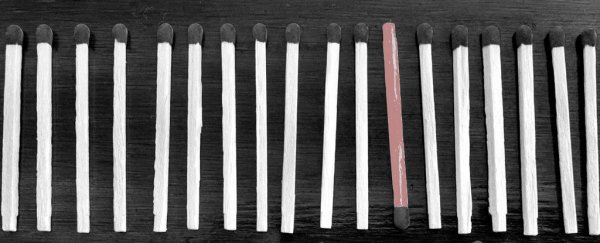
It's hard to believe that something so dramatic can happen right before our eyes without us seeing it. When we light a match, all we see is a quick flash of light followed by a burning flame. But this macro footage captured by production company UltraSlo gives us a deeper look into the science of fire and ignition.
The head of a match contains powdered glass, red phosphorus, sulphur and potassium chlorate. When rubbed on a rough surface (like the strike strip on a box of matches), the friction generates enough heat for the powdered glass to turn the red phosphorus into white phosphorus. The heat generated by the phosphorous breaks down potassium chlorate, and in the process, it releases oxygen. This oxygen combines with sulphur, allowing the flame to sustain long enough for us to light a candle or fire.
This chemical reaction happens in an instant, but in this video, it's slowed down to 4,000 frames per second. And that's not all, the team also had to use over 2,000 watts of lights, mirrors and reflectors to take the mesmerising footage.
Don't know about you, but we sure have a burning desire to watch it over and over again.
Source: UltraSlo
